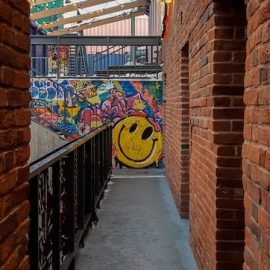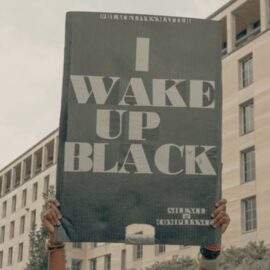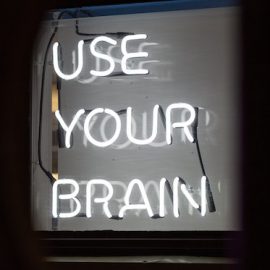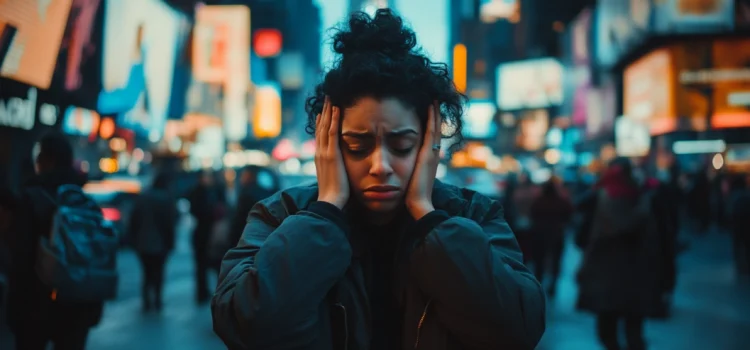
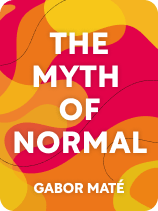
This article is an excerpt from the Shortform book guide to "The Myth of Normal" by Gabor Maté. Shortform has the world's best summaries and analyses of books you should be reading.
Like this article? Sign up for a free trial here.
What role does society play in trauma? What social conditions can harm your physical and mental health?
In his book The Myth of Normal, Gabor Maté describes how certain deeply ingrained structures in Western society like racism, misogyny, and capitalism instill and reinforce trauma. These factors don’t just shape our societies—they have tangible, harmful effects on our physical and mental health.
Here’s a look at the role that society can play in trauma.
The Embodied Trauma of Internalized Racism
The first damaging social condition is racism. Maté discusses the destructive impact of institutionalized racism, which teaches minorities to internalize hate and reject their identities—both overtly through direct discrimination and subtly through systemic bias and cultural messaging. According to Maté, this enforced self-rejection triggers profound psychological wounds that translate into physiological stress responses. This can lead to biological responses like elevated levels of cortisol and inflammation. Sustained over time, this can contribute to health problems such as heart disease, hypertension, and diabetes among affected populations.
For example, in a society that devalues Black womanhood, a Black teenage girl will encounter pervasive messages denigrating her racial identity, such as criticism that her natural hair texture is “unprofessional.” This exposure to racist messaging can lead to chronic psychological stress, which in turn triggers significant physiological reactions. The stress activates her body’s fight-or-flight response, triggering the release of stress hormones like cortisol and adrenaline and disrupts her normal bodily functions, leading to the dysregulation of her hormonal processes.
| How Racist Systems Make Black Americans More Prone to Illness Other writers have expanded on Maté’s argument about the impact of racism on the physical health of minority populations. In The 1619 Project, journalist Nikole Hannah-Jones writes that specific economic policies promoted at the local, state, and federal levels in the United States have made Black Americans more prone to illness than white Americans. She writes that policies developed during the 19th and 20th centuries by white elected officials, city planners, and mortgage bankers forced Black Americans into segregated neighborhoods. City planners then targeted these Black neighborhoods for highway construction, which caused overcrowding, pollution, and health issues for residents. The combination of overcrowding, a lack of clean outdoor places like parks, and poor air quality from passing traffic greatly increased residents’ risk of diseases, especially respiratory illness. Moreover, writes Hannah-Jones, segregation also puts Black Americans at higher risk for diseases like diabetes because healthy food is harder to find in Black neighborhoods while mini markets selling junk food proliferate. And indeed, one 2013 study shows that the more impoverished a neighborhood was, the fewer supermarkets and fresh, nutritious, and low-fat meal and snack options were available—and these findings were especially true for predominantly Black areas. |
How Ingrained Misogyny Fractures Mind-Body Wellness
Similarly, Maté explores how structural misogyny teaches women and girls to view themselves—and especially their sexuality—through a lens of self-hatred and shame. He asserts that Western culture commodifies female sexuality, which reinforces the subservience of women. He writes that this isn’t just a cultural or moral issue; it’s a health issue, with wide-ranging effects on the physical and mental well-being of women and girls.
(Shortform note: This structural misogyny and commodification of female sexuality Maté describes has existed for centuries. In Ways of Seeing, art critic and novelist John Berger explores how the objectification of women was prevalent in the last five centuries of European art. In paintings commissioned by wealthy men, nude women were depicted as passive, alluring subjects of attention. These women were “owned” by the men who owned the paintings, and instead of depicting real women’s bodies, these images showed a fantasy ideal of the women that men wanted to possess—not unlike modern-day airbrushed pictures of sexualized pop stars.)
The Unhealthy Impact of Capitalism
Maté further writes that capitalism, with its relentless pursuit of profit and efficiency, makes us less healthy by making us feel more vulnerable, more lonely, less secure, and less empathetic. The instability of jobs and the pressure to succeed financially can isolate individuals, weakening social bonds. When we’re encouraged to prioritize our success over the welfare of others, we hurt our collective social fabric, which impacts our physical and mental health because we’re wired for the kind of deep connection and mutual care that capitalism erodes.
| How Markets Corrupt Our Values In What Money Can’t Buy, philosopher Michael Sandell writes that not only is capitalism bad for our physical health, but it’s harmful to our most innate values as human beings. Sandel describes a commercialization effect, in which the very act of subjecting certain goods, services, and experiences to the market alters our attitudes toward them and degrades our collective moral and social well-being—forcing us to view them as mere commodities whose value is reflected in their price instead of having intrinsic, nonmonetary value. Sandel notes that the intrusion of market forces into non-market spaces can often be seen literally, in the form of prominent commercial advertisements in the kinds of public spaces—city squares, public transportation systems, sports stadiums, government buildings, educational institutions, and even houses of worship—where they were once off-limits. He argues that the clutter of advertising and its intrusion into nontraditional spaces changes not only the aesthetics of the physical space, but also the ways we experience them. Sandel argues that filling these spaces with eye-catching and garishly commercial advertising irrevocably alters their character and severs our connections to one another as a community: We are no longer full and equal citizens congregating in the public square. Instead, we lose our shared, communal identity and become a disconnected set of individual, atomized consumers. |

———End of Preview———
Like what you just read? Read the rest of the world's best book summary and analysis of Gabor Maté's "The Myth of Normal" at Shortform.
Here's what you'll find in our full The Myth of Normal summary:
- Why we need to rethink what “normal” means when it comes to mental health
- How certain social conditions instill and reinforce trauma
- The role of trauma in shaping health outcomes

